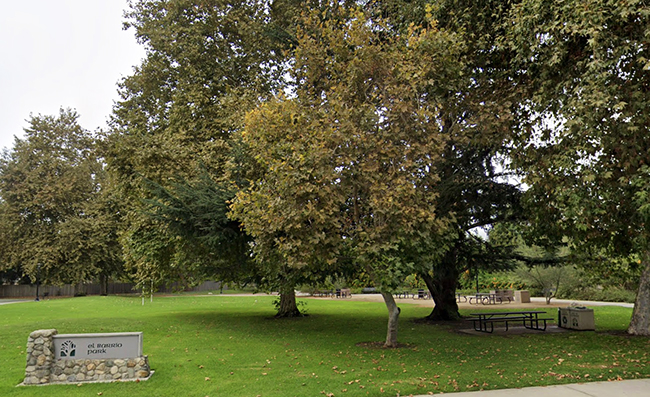Creating lifelong memories during my visit to India
by Chris Oakley
[Editor’s note: COURIER Sports Reporter Chris Oakley took most of December off to travel to India for a friend’s wedding. We missed his jovial spirit in the office, but are thrilled he agreed to share his travel experience with us here. —Kathryn?Dunn]
I received an invitation for the trip of a lifetime last summer, when my Northwestern University friend Shanik Patel announced he was engaged to be married in December of 2012. Although he and his now-wife Hiral live in the United States, the wedding was to be held in Rajasthan, India. I did not need to be asked twice to go. What better way is there to cap off my final semester at Claremont Graduate University than a destination wedding?
I decided to block out 3 weeks for the trip. The wedding was only 2 days, but I wanted to see more of the country and meet with some CGU friends that live in cities around India.I set off with what was left of my diminishing cash supply for the mystical land of precious metals, no driving laws and a billion people.
The journey started in Mumbai, formerly Bombay. I was told most of the cities’ names were changed following the British relinquishing of their Indian empire. I was treated to unbelievably cheap street-side shopping and, although Indians have been complaining about rising prices, my friends and I found deals all over the place for watches, fabrics and marble carvings.
Next on the ticket was the beachside paradise Goa, previously a Portuguese colony. Even in winter, Goa felt like a southern California summer. I swam in the ocean and played soccer in the sand with both locals and European tourists in between naps on my chaise lounge.
After 3 days of soaking up the sun, I went to a hotel Christmas gala. The Indian take on Christmas involved no trees and much more dancing than I was used to, as was the theme for most celebrations in the country.
At least 10 of my closest Northwestern friends all flew in for the wedding. The Sangeet, or reception, was in the courtyard of a lakeside castle in Udaipur, Rajasthan. Over 200 people attended the events. I gave a toast to the couple once everyone was seated, as did a number of others, and then the real festivities began.
Entertainment consisted of choreographed dances to traditional music that told the story of Shanik and Hiral’s courtship in the manner of a Bollywood music video. Next followed dinner, cocktails and about 5 hours of dancing, during which I pulled an abdominal muscle.
The next morning was the Haldi ceremony. Traditionally, at this point, the bride and groom have not met. The ceremony consisted of each individual having yellow turmeric paste rubbed all over their face and limbs, as the substance is known to give the skin a glowing appearance for the wedding later that night.
The final act of the wedding took place in Jagmandir Palace complex. Guests welcomed the groom as he arrived at the location in a horse-drawn carriage to a chorus of drum patterns, then jumped on boats and motored to the other side of Lake Pichola where the palace sits. The ceremony lasted about 4 hours, culminating in the Saptapadi. This ritual called for the couple to solidify the vows they each made to each other by walking around the Holy Fire 7 times, during which the bride begins leading the circuits and then switches to the groom.
After the wedding most people went home, but a few of my friends stuck around to tour more cities with me. I saw the breathtaking Taj Mahal, built by Mughal emperor Shah Jahan for his third wife in the 17th century. Just as beautiful and ostentatious is Akshardham in Delhi, which was constructed by 10,000 workers and artisans and pays homage to the history of India.
I then traveled with the help of a lovely guide to cities in south India, known for its more conservative culture and incredibly spicy food.
Not everything was rosy in India. I was taken aback by the amount of pollution and soot kicked up by the millions of diesel vehicles in each city. The notion of a smog check is unheard of there, and I will forever scoff at people who say that Los Angeles traffic and smog are bad.
Out of nowhere, it seems, cases of brutal gang rape violence have come to light all over the northern parts of India. I could not open an Indian newspaper or watch a television program without being reminded of the horrible crimes that were happening to women and young girls, and the outrage from Indian protestors demanding stricter punishment for the perpetrators.
Finally, the income disparity in India is enormous. India’s economy ranks third largest in the world in terms of purchasing power parity, and grew almost 7 percent in fiscal year 2012. However, over 30 percent of India’s population lives below the poverty line (UNDP 2010). By 2015, India’s poverty rate will decrease by half of what it was in 1990 (Development Goals 2011).
I consider myself extremely lucky to have had the opportunity to visit such a beautiful country. In between the 18-hour flights to and from India, I saw 8 separate cities, ate many distinct cuisines and spent time with people from a few of my different social circles. Nevertheless, it was cathartic to return to my hometown of Claremont after a long and exhausting trip.
In memory of Jose Suarez, CGU Drucker student and friend to many.








0 Comments